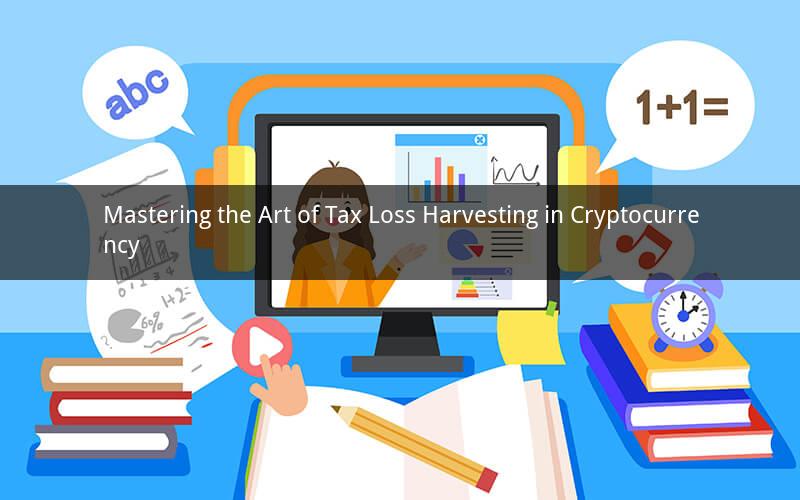
Introduction:
Tax loss harvesting in cryptocurrency has become a crucial strategy for investors looking to optimize their tax liabilities and potentially enhance their overall investment returns. This article delves into the intricacies of tax loss harvesting in the crypto market, providing a comprehensive guide on how to effectively manage this process.
Section 1: Understanding Tax Loss Harvesting in Cryptocurrency
1.1 What is Tax Loss Harvesting?
Tax loss harvesting involves taking advantage of capital losses to offset capital gains, thereby reducing taxable income. In the context of cryptocurrency, it refers to strategically selling off assets at a loss to offset gains from other crypto investments.
1.2 The Importance of Tax Loss Harvesting in Crypto
Given the volatile nature of the cryptocurrency market, tax loss harvesting can be particularly beneficial. It allows investors to mitigate potential tax liabilities while also providing an opportunity to rebalance their portfolios.
Section 2: Identifying Suitable Cryptocurrency Assets for Tax Loss Harvesting
2.1 Assessing Market Conditions
To effectively tax loss harvest in cryptocurrency, it's essential to analyze market conditions and identify assets that are currently experiencing a decline in value.
2.2 Evaluating Individual Cryptocurrency Performances
Investors should evaluate the performance of their individual cryptocurrency assets and identify those that have experienced significant losses.
2.3 Considering Long-Term Investment Horizons
When selecting assets for tax loss harvesting, it's crucial to consider your long-term investment horizon. Avoid selling assets that you believe have long-term growth potential.
Section 3: Implementing Tax Loss Harvesting Strategies
3.1 Calculating Capital Gains and Losses
Before initiating tax loss harvesting, calculate your capital gains and losses for the taxable year. This will help you determine the appropriate assets to sell.
3.2 Selling Cryptocurrency Assets at a Loss
Once you have identified suitable assets, sell them at a loss. Ensure that you record the transaction details, including the date of sale and the selling price.
3.3 Rebalancing Your Portfolio
After selling the cryptocurrency assets at a loss, consider rebalancing your portfolio to align with your investment goals.
Section 4: Tax Implications and Reporting
4.1 Reporting Capital Gains and Losses
It's crucial to accurately report capital gains and losses on your tax return. This includes providing the necessary information regarding the sale of cryptocurrency assets.
4.2 Utilizing the Deduction
Once you have reported your capital losses, you can utilize the deduction to offset your capital gains. Keep in mind that any excess losses can be carried forward to future years.
4.3 Consulting with a Tax Professional
Given the complexities of cryptocurrency taxation, it's advisable to consult with a tax professional to ensure compliance with tax laws and regulations.
Section 5: Best Practices for Tax Loss Harvesting in Cryptocurrency
5.1 Regularly Review Your Portfolio
Regularly review your cryptocurrency portfolio to identify assets that may be suitable for tax loss harvesting.
5.2 Stay Informed About Market Trends
Stay informed about market trends and economic factors that may impact the value of your cryptocurrency assets.
5.3 Maintain Accurate Records
Maintain accurate records of all cryptocurrency transactions, including purchases, sales, and any relevant tax documentation.
5.4 Stay Compliant with Tax Laws
Stay compliant with tax laws and regulations to avoid potential penalties or legal issues.
FAQs:
1. Q: Can I tax loss harvest cryptocurrency if I have never made a profit?
A: Yes, you can still tax loss harvest cryptocurrency even if you haven't made a profit. In this case, you can offset any capital gains you may have made in the future with the losses incurred.
2. Q: Are there any limitations on the amount of capital losses I can deduct in a given year?
A: Yes, there are limitations. You can only deduct up to $3,000 ($1,500 if married filing separately) of capital losses each year. Any excess losses can be carried forward to future years.
3. Q: Can I tax loss harvest cryptocurrency if I have already taken a capital gain deduction in the past?
A: Yes, you can still tax loss harvest cryptocurrency even if you have already taken a capital gain deduction in the past. However, ensure that you have accurately calculated your capital gains and losses to avoid any discrepancies.
4. Q: Can I tax loss harvest cryptocurrency if I hold the assets in a retirement account?
A: No, tax loss harvesting is not applicable to retirement accounts. The rules and regulations surrounding retirement accounts are different from those applicable to taxable accounts.
5. Q: Is tax loss harvesting in cryptocurrency a taxable event?
A: Yes, tax loss harvesting in cryptocurrency is a taxable event. When you sell cryptocurrency assets at a loss, you must report the transaction on your tax return and pay any applicable taxes.